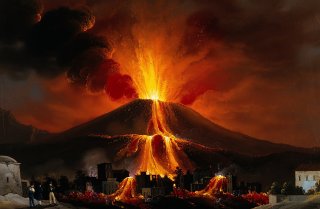Scientists Now Know the ‘Most Dangerous Place in the History of Planet Earth’
According to a paper published in the journal ZooKeys, a team of scientists was able to review an array of fossils found in ancient rock formations known as the Kem Kem Group, which is situated near the border between Morocco and Algeria on the northwestern edge of the Sahara Desert. The team’s conclusion: The “most dangerous place in the history of planet Earth.”
Scientists Now Know the ‘Most Dangerous Place in the History of Planet Earth’
By Ethen Kim Lieser
Forget about the two devastating world wars or ready-to-erupt volcanoes. If you have the guts to experience the most dangerous place in our planet’s 4.5 billion-year-old history, you’ll have to find a way to time-travel 100 million years into the past and get to an area of the Sahara in what is now southeastern Morocco.
Just don’t become an appetizer for the hungry predators that you’ll encounter there.
According to a paper published in the journal ZooKeys, a team of scientists was able to review an array of fossils found in ancient rock formations known as the Kem Kem Group, which is situated near the border between Morocco and Algeria on the northwestern edge of the Sahara Desert.
The team’s conclusion: The “most dangerous place in the history of planet Earth.”
“This was … a place where a human time-traveler would not last very long,” lead paleontologist and the study’s co-author Nizar Ibrahim said in a statement.
Ibrahim added that the Kem Kem Group provides a “window into Africa's Age of Dinosaurs.” The reviewed fossils, many of which are now housed in collections around the world, include those of massive dinosaurs, pterosaurs, crocodilians, turtles and fish, among others.
Three of the biggest and fearsome predatory dinosaurs ever discovered were found to have roamed this particular region. They include Carcharodontosaurus, a group of dinosaurs known for their knife-like serrated teeth, and Deltadromeus, a collection of raptors with long, slender hind limbs. Some of these dinosaurs surpassed 40 feet in length, researchers said.
Today, this particular region is quite dry and arid. But 100 million years ago, when these terrifying creatures thrived, the area was home to an enormous river system supported by a tropical climate and featured many species of both aquatic and terrestrial animals, researchers said.
Many of these predators likely received their meals from the numerous fish that packed this river system.
“This place was filled with absolutely enormous fish, including giant coelacanths and lungfish,” the study’s co-author David Martill, of the University of Portsmouth, said in a statement.
“The coelacanth, for example, is probably four or even five times larger than today’s coelacanth. There is an enormous freshwater saw shark called Onchopristis with the most fearsome of rostral teeth – they are like barbed daggers, but beautifully shiny.”
Ethen Kim Lieser is a Tech Editor who has held posts at Google, The Korea Herald, Lincoln Journal Star, AsianWeek and Arirang TV. He currently resides in Minneapolis.

